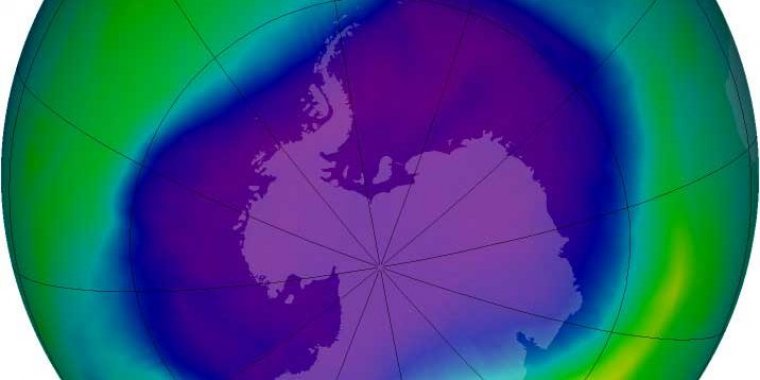| News / World News |
Warmth in the Antarctic stratosphere helped limit the size of the ozone hole in 2017 to the smallest observed since 1988
Measurements from NASA satellites showed the hole in the Earth’s ozone layer that forms over Antarctica each September grew to only 7.6 million square miles in extent (coverage) before starting to recover this year. The average peak area observed since 1991 has been roughly 10 million square miles.
The ozone hole reached its peak extent on Sept. 11, covering an area about two and a half times the size of the United States, and then declined through the remainder of September and into October. NOAA’s ground- and balloon-based measurements also found the least amount of ozone depletion since 1988. The two agencies have monitored the ozone hole for the past 25 years.
First detected in the 1980s, the Antarctic ozone hole forms during the Southern Hemisphere’s late winter as the returning sun’s rays accelerate reactions involving man-made forms of chlorine and bromine, like chlorofluorocarbons, that concentrate over Antarctica during winter. These reactions destroy ozone molecules.
The smaller ozone hole in 2017 was strongly influenced by an unstable and warmer circulation pattern in the Antarctic stratosphereoffsite link that minimized the formation of high-altitude clouds. The persistence of these clouds is an important first step supporting chemical reactions that destroy ozone, scientists say.
Thirty years ago, the international community signed the Montreal Protocol on Substances that Deplete the Ozone Layer and began regulating ozone-depleting compounds. Scientists expect the ozone hole to gradually become less severe and recover back to 1980 levels around 2070. (NOAA)
YOU MAY ALSO LIKE





